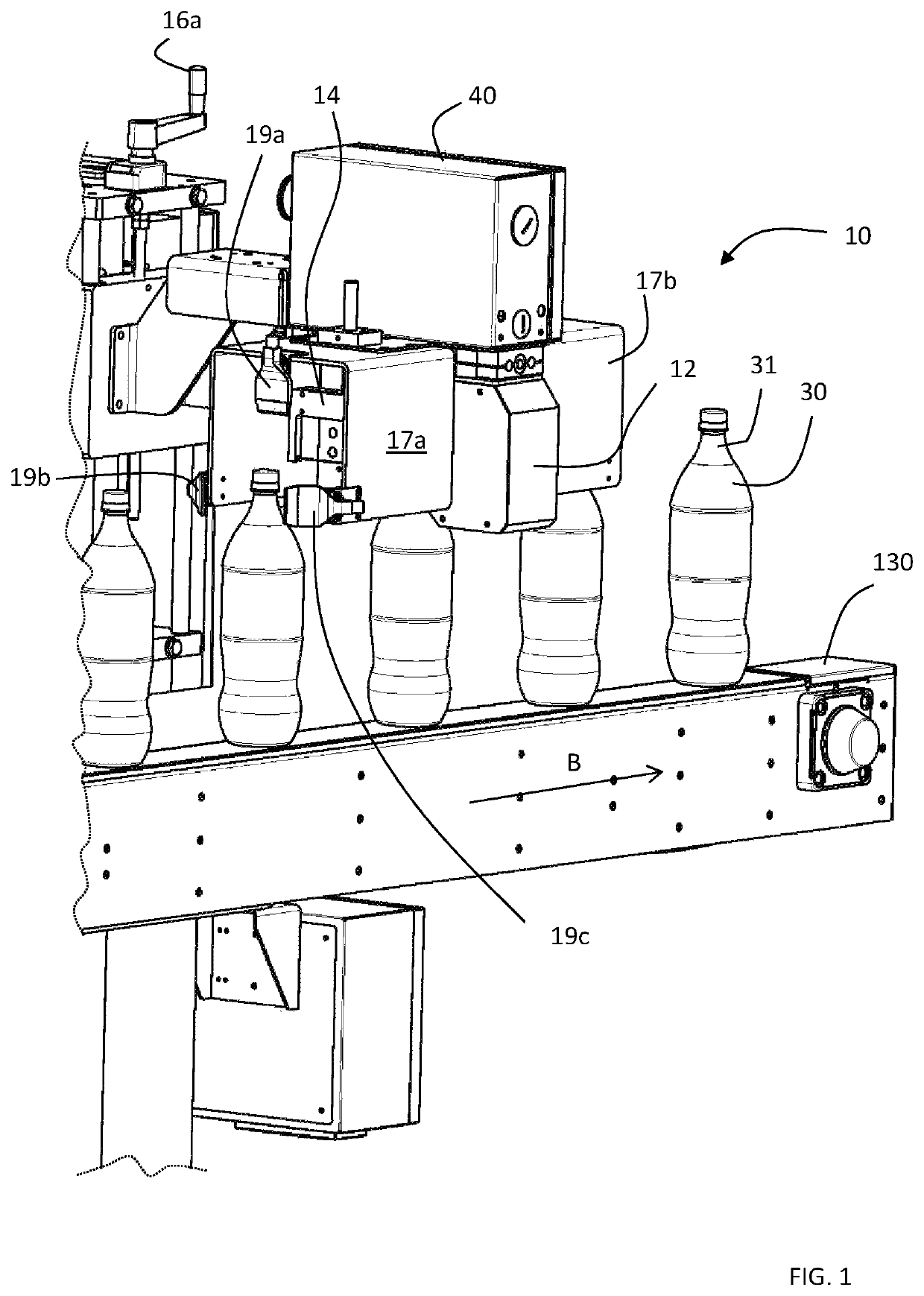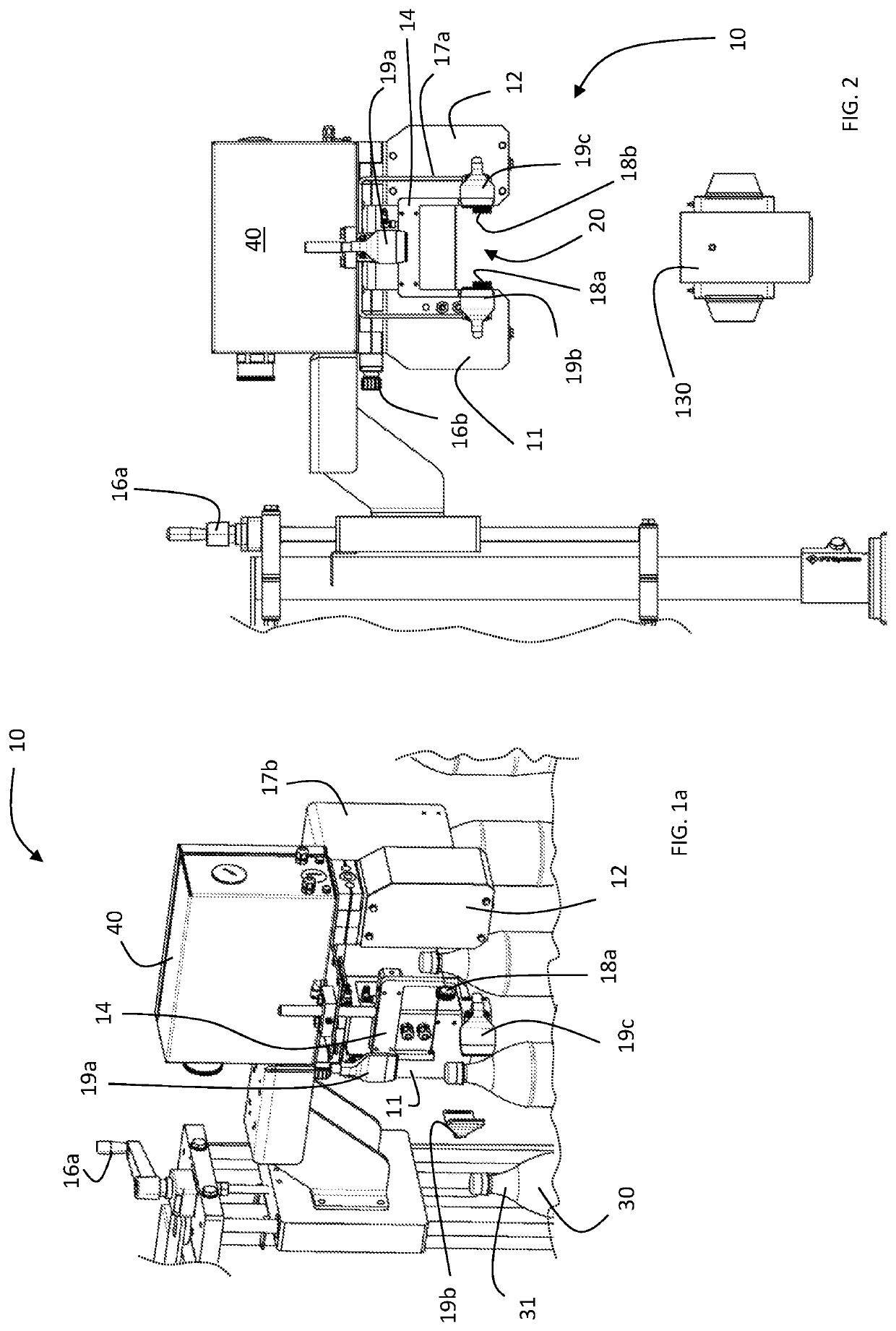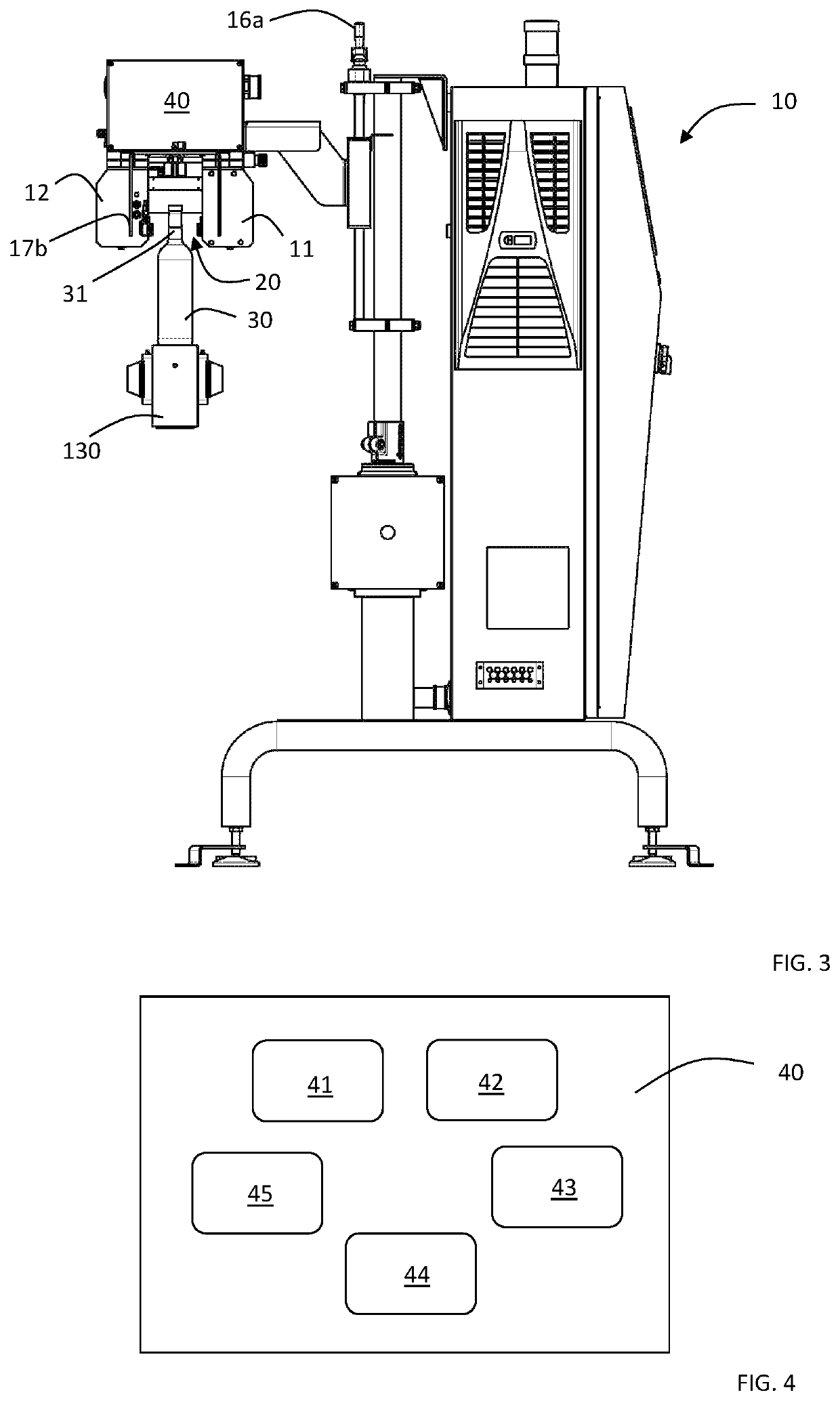These machines, as well as being bulky and having a significant
impact on the production lines, are influenced by the operating
plant conditions.
Such a technique is, however, influenced by the repetitiveness of the closures, i.e., for the same
internal pressure, there could be a difference in the measurement of the
acoustic response in the case in which the closures carried out are not perfectly identical.
The Applicant has found that laser
spectroscopy measuring apparatuses known in the state of the art are difficult to use to directly measure, on line, the
internal pressure of commercial containers, like for example bottles.
Such containers are characterised both by poor
optical quality that leads to an even substantial attenuation of the laser beam, and by dishomogeneity of such walls that contributes to high
diffusion of the light and retroreflection of the
radiation.
The Applicant has, indeed, observed that, since the
laser light is strongly coherent, every contribution of reflected / diffused light causes etalon disturbances, i.e. spurious and variable modulations of the intensity due to the interference between coherent beams.
Such disturbances are often the limiting element to the precision with which a measurement can be carried out directly in line according to laser
spectroscopy technology in commercial containers.
The Applicant has also found that laser
spectroscopy measurers according to the state of the art do not allow operation at the high speeds of forward motion characteristic of filling and / or packaging plants of foods or beverages.
In this way, the data measurement contributions from scans that are not useful tend to have a low influence on the overall measurement.
In particular, the systems used up to now for determining the
signal acquisition time period cannot be used at the characteristic speeds of filling and / or packaging plants of beverages or foods.
However, the calculation offered by the
encoder is not able to provide a precise indication since the forward
motion system can undergo delays with respect to the reference of the
encoder or even the container could not be firmly constrained to the forward
motion system and therefore undergo displacements during the conveying.
Similarly, not even the addition of photocells is sufficient to offer the level of precision necessary in use at the characteristic speeds of filling and / or packaging plants of beverages or foods.
This leads to a partial
elimination of the gas flushed at the inspection area, due to the movement of the containers, and therefore to incomplete
elimination of the gas under examination in such an area.
For example, in the measurement of pressure inside glass bottles filled with beer, where the laser spectroscopy technique reveals the total and
partial pressure of
carbon dioxide, there are great distortions on the signal acquired caused by possible deformations of the glass or by the presence of foam in the product.
Similarly, in the measurement of pressure inside plastic bottles filled with still water, where the laser spectroscopy technique reveals the total pressure through scanning on the absorption line of water vapour, the presence of a droplet of
nitrogen in the top space, used to increase the total pressure of the sealed
bottle, causes great distortions of the detected signal (very variable presence of state of condensation as a function of the time passed since the
nitrogen was inserted and the amount thereof).
A low signal amplitude is, indeed, usually due to disturbance factors such as the presence of external or internal droplets, defects in the wall of the container, the presence of a tab that allows the product to be opened present in certain types of containers and so on.
 Login to View More
Login to View More  Login to View More
Login to View More 


